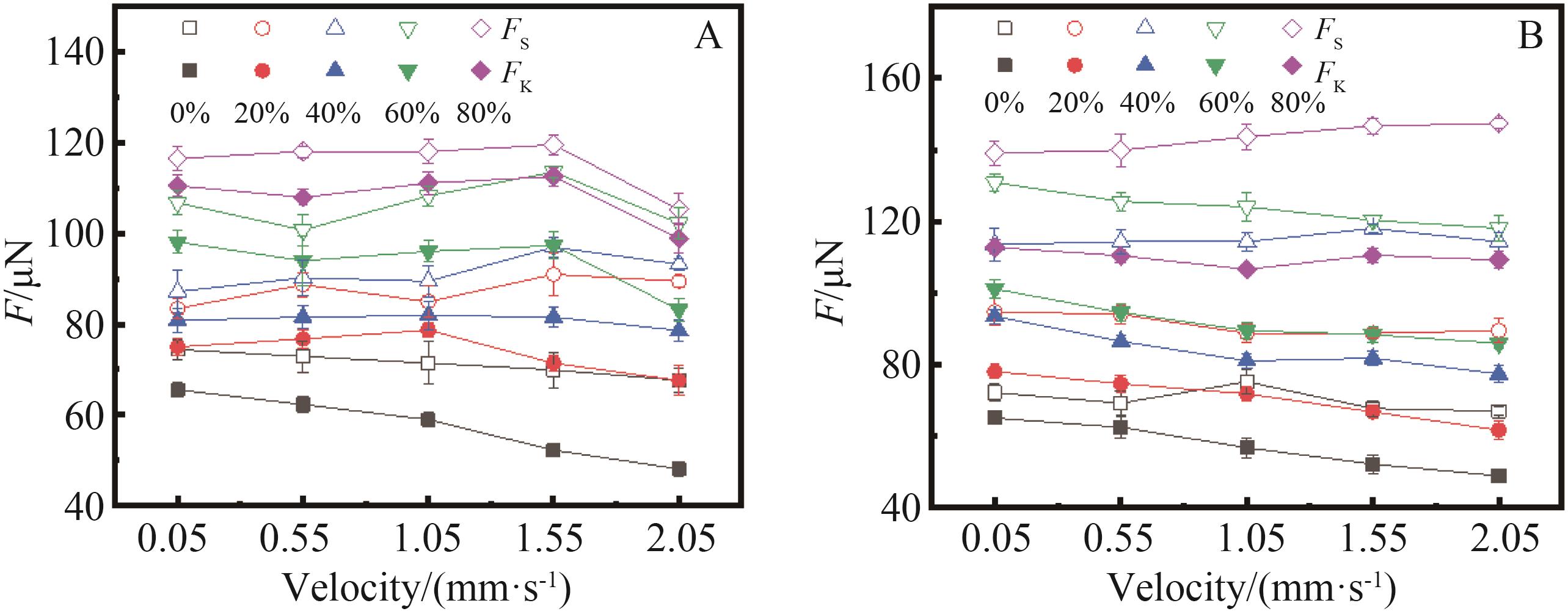| 1 |
FENG L, ZHANG Y N, XI J M, et al. Petal effect: a superhydrophobic state with high adhesive force[J]. Langmuir, 2008, 24(8): 4114-4119.
|
| 2 |
XI J M, JIANG L. Biomimic superhydrophobic surfaces with high adhesive forces[J]. Ind Eng Chem Res, 2008, 47(17): 6354-6357.
|
| 3 |
王明超, 杨青林, 王春, 等. 玫瑰花花瓣微观结构与水滴黏附性质的关系[J]. 高等学校化学报, 2011, 32(7): 1594-1597.
|
|
WANG M C, YANG Q L, WANG C, et al. Effects of micro-and nano-structure on the adhesive property of rose petals[J]. Chem J Chinese Univ, 2011, 32(7): 1594-1597.
|
| 4 |
WENZEL R N. Resistence of solid surfaces to wetting by water[J]. Ind Eng Chem Res, 1936, 28(8): 988-994.
|
| 5 |
WANG L, WEI J, SU Z. Fabrication of surfaces with extremely high contact angle hysteresis from polyelectrolyte multilayer[J]. Langmuir, 2011, 27(24): 15299-15304.
|
| 6 |
ZHENG Y M, GAO X F, JIANG L. Directional adhesion of superhydrophobic butterfly wings[J]. Soft Matter, 2007(3): 178-182.
|
| 7 |
HONG X, GAO X, JIANG L. Application of superhydrophobic surface with high adhesive force in no lost transport of superparamagnetic microdroplet[J]. J Am Chem Soc, 2007, 129(6): 1478-1479.
|
| 8 |
GUO Z G, LIU W M. Sticky superhydrophobic surface[J]. Appl Phys Lett, 2007, 90(22): 988.
|
| 9 |
LAI Y, GAO X, ZHUANG H, et al. Designing superhydrophobic porous nanostructures with tunable water adhesion[J]. Adv Mater, 2010, 21(37): 3799-3803.
|
| 10 |
ZHAO W J, WANG L P, XUE Q. Fabrication of low and high adhesion hydrophobic au surfaces with micro/nano-biomimetic structures[J]. J Phy Chem C, 2010, 114(26): 11509-11514.
|
| 11 |
JIN M, FENG X, FENG L, et al. Superhydrophobic aligned polystyrene nanotube films with high adhesive force[J]. Adv Mater, 2005, 17(16): 1977-1981.
|
| 12 |
BHUSHAN B, HER E K. Fabrication of superhydrophobic surfaces with high and low adhesion inspired from rose petal[J]. Langmuir, 2010, 26(11): 8207-8217.
|
| 13 |
王立新, 张琳琳, 张硕研, 等. 猪笼草叶笼滑移区各向异性超疏水润湿特性表征与机理分析[J]. 中国农业大学学报, 2020, 8: 35-42.
|
|
WANG L X, ZHANG L L, ZHANG S Y, et al. Anisotropic superhydrophobic wettability measurement and mechanism analysis of slippery zone in Nepenthes pitchers[J]. J China Agric Univ, 2020, 8: 35-42.
|
| 14 |
张洪敏, 汪涛, 鱼银虎, 等. 类蝴蝶翅膀表面微纳结构的制备及其疏水性[J]. 中国表面工程, 2014, 27(5): 131-136.
|
|
ZHANG H M, WANG T, YU Y H, et al. Preparation and hydrophobic properties of the micro-nanostructure of butterfly wings surface[J]. China Surf Eng, 2014, 27(5): 131-136.
|
| 15 |
ZHENG Y, BAI H, HUANG Z, et al. Directional water collection on wetted spider silk[J]. Nature, 2010, 463(7281): 640-643.
|
| 16 |
VINOGRADOVA O I, DUBOV A L. Superhydrophobic textures for microfluidics[J]. Mendeleev Commun, 2012,22(5): 229-236.
|
| 17 |
JUNG Y C, BHUSHAN B. Biomimetic structures for fluid drag reduction in laminar and turbulent flows[J]. J Phys Condens Matter, 2010, 22(3): 035104-035113.
|
| 18 |
HUANG Y, STOGIN B B, SUN N, et al. A switchable cross-species liquid repellent surface[J]. Adv Mater, 2017, 29(8): 1604641.1-1604641.7.
|
| 19 |
LI Q, LI L J, SHI K, et al. Reversible structure engineering of bioinspiredanisotropic surface for droplet recognition and transportation[J]. Adv Sci, 2020, 7: 2001650.
|
| 20 |
SHI K, LI Q, ZHANG J H, et al. Quantitative characterization of surface wettability by friction force[J]. Appl Surf Sci, 2021, 536: 147788.
|

 )
)





